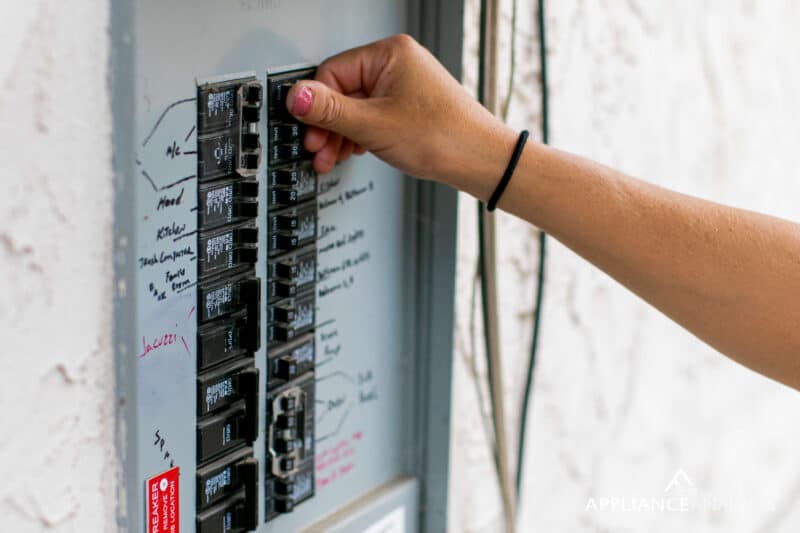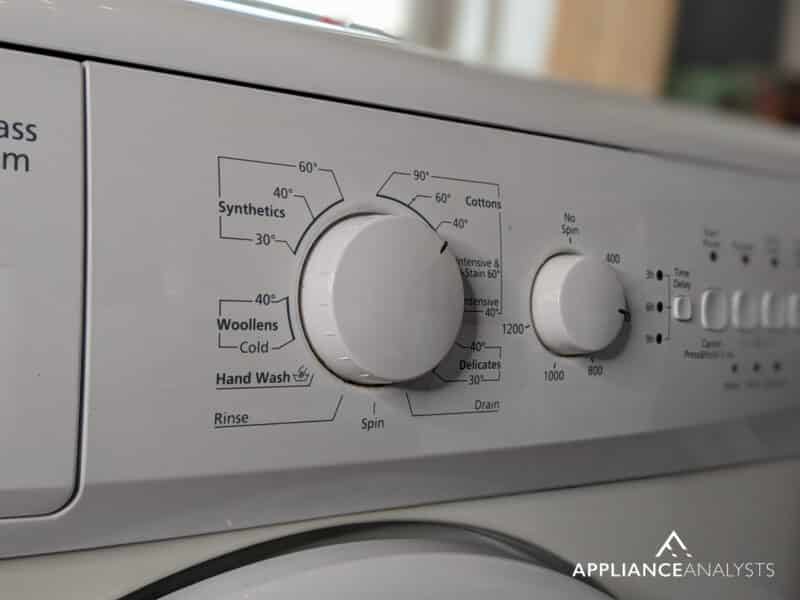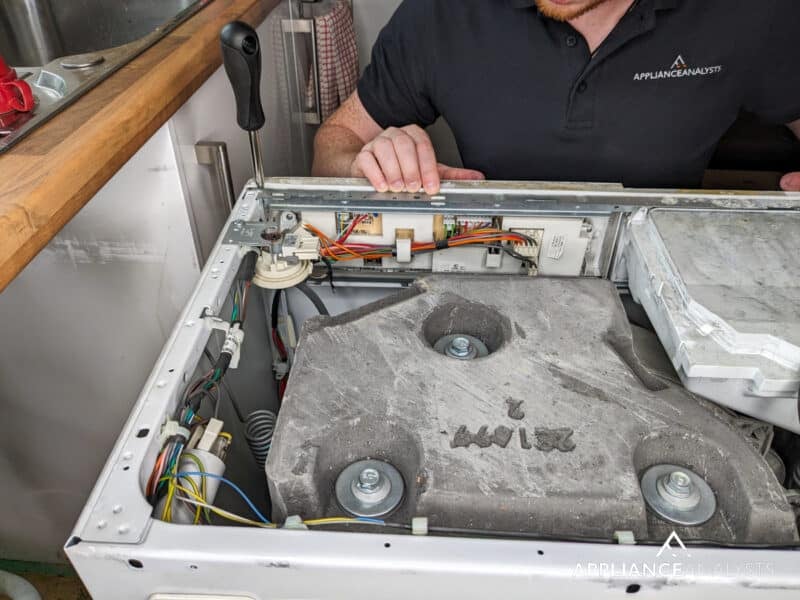We've independently reviewed this article to make sure it's as accurate as we can make it.
To find out more about our article creation and review process, check out our editorial guidelines.
Has your washer gone on strike and is refusing to start?
That sounds like quite an inconvenience! However, you might find comfort in knowing that this issue affects thousands of people daily, so it’s not as uncommon as you might think.
I know it can be very frustrating to have this happen, especially when you have a hamper full of dirty clothes that need urgent cleaning.
Luckily, you came to the right place for answers. Below, I’ve prepared an article discussing the most common causes behind this situation and some simple ways to address each one. I’m certain that, by the end of it, you will have pinpointed and likely fixed any problems and their sources.
When your washer is not starting you’ll want to double-check that your circuit breakers are in the right position, that the interface control panel is ok, and that the main control board is also unscathed. You’ll also want to listen for any beeping and use a multimeter if you have one.
Why trust us? This article was written by Craig Anderson and James Blackford.
Craig has helped thousands of other homeowners repair their appliances since 2016.
James is one of our resident appliance experts with over 16 years of experience. He currently works as a Master Technician for SquareTrade, and runs his own appliance repair business.
Try Our Quiz
Washer issues can often be diagnosed with a few troubleshooting questions.
Follow our quiz below and we may be able to guide to the root cause:
Why Is Your Washer Not Starting
In my experience, the 2 most common culprits behind a washer that’s not starting are the control panel interface and the main control board. Between them, they’re in charge of about 90% of your appliance’s operation, washing cycles, and all other processes.
There are many ways to diagnose issues with either or both of them and also rule out other potential causes.
So, without further ado, let’s dive in!
#1 Check Your Circuit Breakers
The first thing I’d like you to take a closer look at is the position of your circuit breaker’s switches. As you may know, these are one of your home’s main protection systems against electrical spikes caused by short circuits or power surges.

When something out of the ordinary happens, the switches on the breakers trip, cutting off all power supply to a specific area of your home, or a specific appliance. I know this might sound a little obvious, but it’s always a good idea to double-check the simple things before moving into more complex scenarios.
Checking this should be very quick, especially if you already know what the switches to your laundry room are. Once you’ve made sure they are flipped the right way, we can move on to other potential culprits.
#2 Check the Control Panel Interface
Having ruled out a simple circuit breaker switch positioning oversight, let’s now focus our attention on the appliance’s control panel interface.
This is the part that basically transforms all your inputs into commands that are then sent over to the main control board. When it fails, even if the washer is working, you might be tricked into thinking that it’s not, as it won’t react to anything you’re dialing in.

Now, diagnosing this as the source of the problem is easier said than done, as sometimes you might have a hard time determining whether the control interface is to blame, or if the main control board is what’s actually faulty.
A good way to make things easier is by getting your machine to go into test mode. Depending on your washer’s make and model, the process to do this will vary. I recommend going to Google and searching for “How to get <Your Washer’s Make And Model Go Here> into test mode”.
Provided you can get it into Test Mode, the issue likely lies with this part, and not the main control board. When asked about this, James said that, typically, you’ll want to take matters into your own hands.
“Control panel interfaces are typically anywhere from $120 to $360, which is frequently cheaper than a new washer. A repair company will charge you a good amount of money to change it, but given that replacing it is as simple as undoing 3 screws, 2 clips, and 1 connector, I recommend saving yourself $180 from paying a technician and changing it yourself”.
#3 Check the Main Control Board
Moving on, let’s now talk about what in my opinion, is the most important part of your washer – the main control board. If you’re not sure what this is, I’m more than happy to explain it briefly.
In a nutshell, this is your washer’s brain. It receives and processes all the inputs from the control panel interface, and it also tells the machine what cycle to use, when to stop pouring water, and more.

Having this critical part fail could explain why your washer is not starting, as it doesn’t have a functioning control component. Sometimes it can be hard to pinpoint this as the source of the issue since the general symptoms are very similar to those of the control panel interface.
One of the simplest ways to diagnose a faulty main control board is by looking closely at how the washer responds to inputs and electricity. When the issue lies with the control panel interface, you might still hear sounds and see lights coming from the appliance, whereas when it lies with the main control board, the unit will be, for all intents and purposes – dead.
#4 Listen for a Beep
As I said above, lights and sounds are your friends in these situations.
When asked about the trustworthiness of audio indicators to determine the source of a washer’s problems, James explained that, if the machine has them, they’re great starting points.
If you suspect your machine’s main control board is bad, try flipping the switch on your circuit breakers to interrupt the power supply to the laundry room, and then flip it back to the “on” position. If the main control board is ok, you should hear a beep as the machine goes on once it gets electricity.
Unfortunately, not all washers have sound, so I’d recommend reading your User Manual to see whether yours does, as otherwise, the absence of a beep might be completely normal, rather than an indicator that something’s wrong.
#5 Use a Multimeter
Lastly, I want to talk about how you can use a multimeter to pinpoint the source of this issue much more accurately.
As I’ve mentioned a couple of times before, one of the most challenging aspects of diagnosing this problem correctly is being able to tell whether the culprit is the main control board or the control panel interface.

By using a multimeter, you can be a little more scientific about this and get a clearer answer. Here’s what you have to do:
- Remove your washer’s front panel to access the control panel interface’s wiring.
- Locate the connectors that go from the control panel interface, to the main control board.
- Set the multimeter to DC voltage.
- Find a good, solid ground.
- Press the power button on the main control panel interface as you would when turning the washer on normally.
- Look for any voltage fluctuations on the meter. If there are none, the interface is probably bad, and the main control board is ok.
Determining whether the interface panel or the main control board are to blame can help save you a lot of time and money. A good multimeter is not awfully cheap, but if you can justify more uses for this tool in the future, it might be a good idea to get one!
Conclusion
That about covers it!
When your washer is not starting, no matter what you do, dirty laundry can pile up and something convenient can quickly turn into a huge inconvenience.
Luckily, as I hope you’ve learned in this piece, addressing the most common causes behind this issue is very easy and quick. More often than not, there might be something wrong with your appliance’s main control board or the interface control panel. I recommend taking the time to determine which one’s to blame and go from there.
Thank you very much for sticking with me all the way to the end. If this article piqued your interest and answered your most burning questions, please check out our other resources below and consider subscribing to our newsletter.
On the site, we have all sorts of solutions for everyday appliance issues, such as a washer that keeps beeping, or that won’t turn off.
I wish you all the best!
— Craig.







